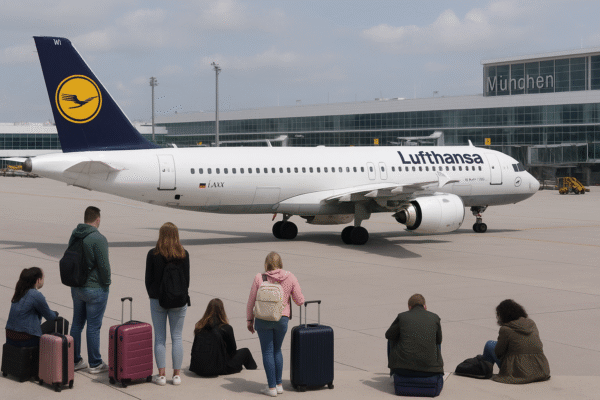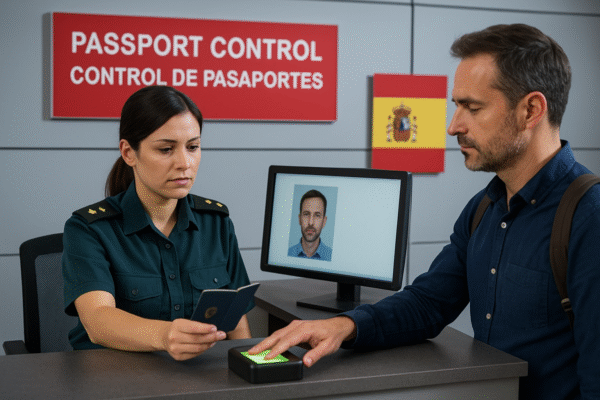Spain, one of Europe’s most visited destinations, has announced urgent new entry procedures that will affect millions of travelers starting October 12, 2025. The upcoming changes are part of the European Union’s new Entry/Exit System (EES), designed to enhance border security while streamlining immigration processes.
For tourists, business travelers, and families heading to Spain, this means significant changes at border control. Instead of traditional passport stamping, visitors will now undergo biometric checks, including fingerprinting and facial scans. While these procedures aim to strengthen security and prevent overstays, they may also result in longer waiting times at airports, ferry terminals, and land borders during the initial rollout phase.
What Is the New Entry/Exit System (EES)?
The Entry/Exit System (EES) is a digital platform replacing manual passport stamping for non-EU nationals visiting the Schengen Area, which includes Spain and 28 other member countries. The system will electronically register travelers’ entry and exit dates, alongside biometric data, making it easier for authorities to track overstays and strengthen border management.
This initiative is part of a broader EU effort to improve security while ensuring the efficient flow of visitors. Authorities expect that once fully operational, the system will help reduce illegal immigration, provide faster verification of travel documents, and offer smoother transit for legitimate travelers.
What Travelers Should Expect
From October 12, 2025, all travelers entering Spain from non-EU countries will have to provide biometric data during border checks. The process includes:
- Facial recognition scans at entry points.
- Fingerprinting for first-time visitors under the new system.
- Digital recording of personal information, including passport details, travel purpose, and planned departure date.
Although designed to simplify border management in the long term, the new procedures could initially slow down processing times, especially at busy entry points like Madrid-Barajas Airport, Barcelona’s El Prat, and major land crossings. Authorities are urging travelers to allow extra time when entering Spain after the rule change.
Gradual Rollout Across the Schengen Zone
The EES will not be fully implemented overnight. The system will be phased in across the Schengen Area in stages:
- October 12, 2025: At least one border point in every Schengen country, including Spain, will begin biometric checks.
- December 2025: More checkpoints will be upgraded to include both fingerprinting and facial scans.
- January 2026: Half of all Schengen border points will use the system, processing at least one-third of passengers digitally.
- March 2026: All border points will operate the EES, handling at least half of travelers through biometric verification.
- April 10, 2026: Full system implementation across all entry points, with biometric checks for every traveler.
This staged approach is designed to reduce disruptions but still requires travelers to be prepared for delays during the transition.
Key Entry Requirements for Travelers to Spain
Besides the new biometric procedures, visitors to Spain must continue to comply with standard Schengen Area rules. Travelers should ensure:
- Valid Passport: Issued within the last ten years and valid for at least three months beyond the planned departure date from the Schengen Area.
- Proof of Stay: Hotel booking, rental confirmation, or invitation letter from friends or family.
- Financial Means: Proof of sufficient funds to cover the duration of stay.
- Return or Onward Ticket: Evidence of departure from the Schengen Area within 90 days.
- Travel Insurance: Covering medical expenses and emergencies for the entire visit.
Failure to meet these requirements may lead to denied entry, even if biometric checks are successfully completed.
Impact on British and Other Non-EU Travelers
The UK government has already advised its citizens to prepare for longer waiting times when entering Spain and other EU destinations once the EES takes effect. At UK departure points such as Dover, Folkestone, and St Pancras International, biometric data may be collected before travelers board trains or ferries heading to Spain and other Schengen countries.
On the return journey, travelers may also be asked to provide biometric details when leaving Spain, ensuring their departure is digitally recorded. This will replace the reliance on manual passport stamps, which often caused confusion regarding the 90-day rule.
Tourism Sector Response
Spain’s tourism industry is bracing for an initial adjustment period. With Spain welcoming over 80 million international visitors annually, the country remains one of the top tourist destinations in the world. Travel operators, airlines, and hotels are advising tourists to be aware of the new system and to allow extra time at border control points, particularly during peak holiday seasons.
While concerns remain about longer queues, Spanish authorities stress that the system will ultimately make travel safer and more efficient. Once familiar with the biometric process, frequent visitors are expected to find entry smoother than the traditional stamping method.
Preparing for Your Trip
To avoid disruptions, travelers planning trips to Spain after October 12, 2025, are strongly encouraged to:
- Double-check passport validity before booking travel.
- Keep copies of travel insurance, accommodation, and return tickets ready for inspection.
- Arrive at airports and border crossings with additional time to spare.
- Stay updated on official government travel advisories regarding EES rollout.
A Safer, Smarter Border Future
The introduction of the Entry/Exit System marks a historic change in how Spain and the EU manage international travel. While the first months may see longer queues, the long-term vision is a border process that is both more secure and more efficient.
For travelers, preparation is key. With the right documents and extra time allowed for checks, visiting Spain will remain as enjoyable and memorable as ever—just with a new layer of digital security to ensure smoother journeys in the years ahead.
For more travel news like this, keep reading Global Travel Wire















